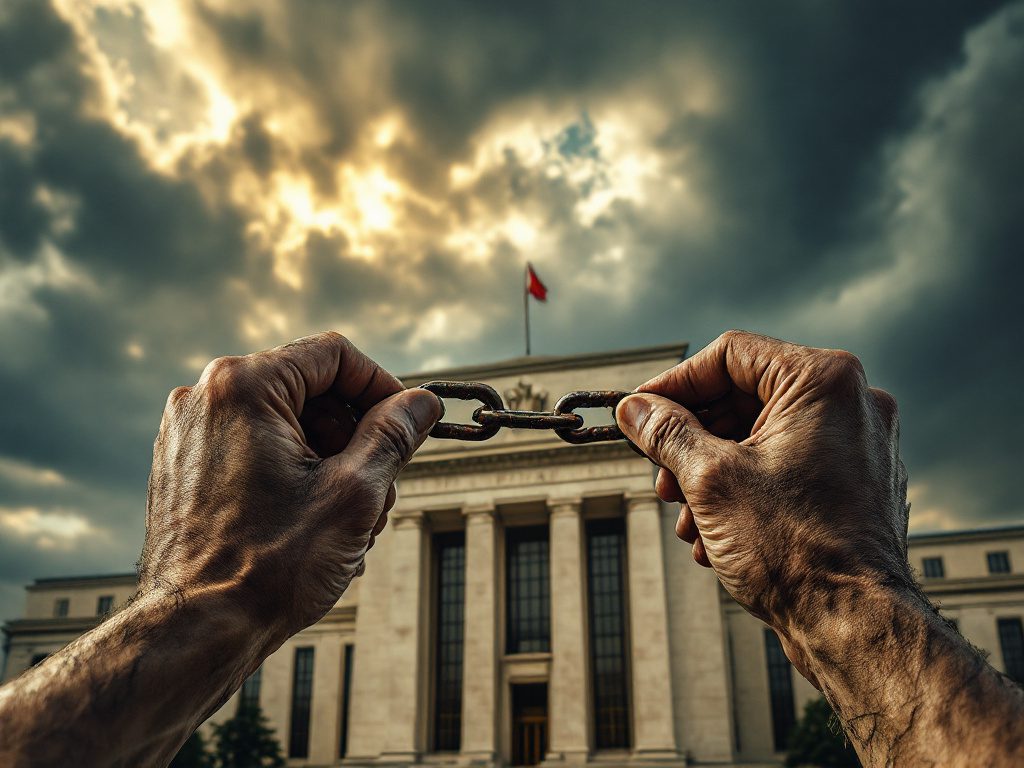A President’s Boast, a Central Banker’s Resolve
On a blustery evening in Warren, Michigan, the crowd roared as President Donald Trump strode confidently onto the stage, marking the first 100 days of his second term. The script was classic Trump: braggadocious, unapologetic, and laced with jabs at those he deems obstacles to his agenda. This time, his target was once again Federal Reserve Chair Jerome Powell. Without mentioning Powell by name, Trump claimed, “I know much more than the Fed Chair about interest rates.” The line drew laughter and thunderous applause, yet also sent anxious ripples outside the rally’s enthusiastic audience.
This latest broadside against the nation’s central banker isn’t merely a rhetorical flourish—it’s part of a sustained, deeply consequential campaign to shape monetary policy through political pressure. Historically, presidents have generally respected the independence of the Federal Reserve, recognizing that expert-driven, nonpartisan stewardship of interest rates serves as a stabilizing force for the U.S. economy. Trump, in contrast, has persistently cast himself as a monetary authority, insisting that, were the Fed simply to heed his calls for lower rates, the American economy would see unprecedented growth.
Why does this matter to you? Because the independence of the Federal Reserve isn’t some arcane tradition—it affects the way every American borrows, saves, and invests. The federal funds rate serves as the bedrock for various forms of household credit: from mortgages and auto loans to credit card APRs. As of now, that rate sits at 4.33%, a level set deliberately to balance economic growth and inflation, not presidential approval.
The Real Cost of Politicizing Monetary Policy
Trump’s rally rhetoric extended beyond personal boasts. He touted declining gasoline prices, falling mortgage rates, and even record drops in prescription drug costs—all presented as direct products of his administration’s stewardship. It’s a tempting narrative. But a closer look reveals a more complex interplay of global forces and multiyear policy trends at work, many of which lie beyond any one president’s direct control.
According to a recent Pew Research Center analysis, Americans’ trust in major institutions—including the Federal Reserve—correlates closely with perceptions of independence from political meddling. When the Fed is perceived as merely another pawn in the White House’s game, this trust erodes. The consequences can be severe: as Harvard economist Jane G. Doe stresses, “Markets prize certainty above all else. If investors believe interest rate decisions hinge on political whim rather than economic fundamentals, capital flight and volatility are sure to follow.”
Look to the 1970s for a sobering historical parallel. As President Richard Nixon pressured then-Fed Chair Arthur Burns to keep rates low before the 1972 election, the result was an inflationary spiral that would haunt ordinary Americans for a decade. Economists and policymakers across the spectrum point to this period as a cautionary tale—proof that political short-termism can do lasting damage to household finances and economic stability.
What makes today’s situation particularly alarming is how Trump’s attacks coincide with ongoing economic uncertainty. The United States is still weathering fallout from repeated trade wars, global supply chain disruptions, and an inflation hangover that has strained workers and retirees alike. Despite Trump’s boasts, Jerome Powell has stood firm, signaling the central bank will “hold the line” on rates until clearer signs of inflation relief materialize. Powell’s critics may wish for swifter cuts, but premature easing, as the International Monetary Fund notes, risks reigniting inflation and eroding real wages—harms that fall hardest on middle- and low-income Americans.
The Fed’s Independence: A Guardrail for Democracy
Trump’s challenge to Powell isn’t an isolated outburst. It’s part of a broader pattern—one that includes his previous attempts to install partisans at the Fed and his recent legal battles to extend presidential control over independent agencies. This context is especially crucial as the Supreme Court now weighs cases that could grant presidents sweeping powers to hire and fire at will across the federal bureaucracy. If the high court sides with expanded executive authority, the precedent for future White House meddling in monetary policy could be set for decades.
This isn’t just a hypothetical. The global economic landscape is littered with examples of nations whose central banks lost autonomy to strongman leaders—with disastrous outcomes. Turkey, for instance, has suffered runaway inflation and currency collapse after politicians subordinated its central bank to political demands. Americans have long taken for granted an era of stable inflation and reliable credit access. That stability is not preordained.
“Presidential bullying of the Fed isn’t tough leadership—it’s a dangerous gamble with the financial security of every household in America. Once lost, central bank independence is extraordinarily difficult to restore.”
Some may wonder: does all this hand-wringing over arcane central bank policy really affect working families? The answer is a resounding yes. If the Fed’s credibility erodes, borrowing costs can spike unpredictably, savings may lose value to rampant inflation, and everyday Americans pay the price—not Wall Street or the White House.
Democratic norms are not abstractions but living systems that demand protection and vigilance. The principle of separating fiscal and monetary powers safeguards ordinary people from the upheavals of political self-interest. Progressive values—centered on shared prosperity, robust democracy, and social justice—flourish not in a climate of executive strong-arming, but where institutions are empowered to serve the public good over partisan gain.

